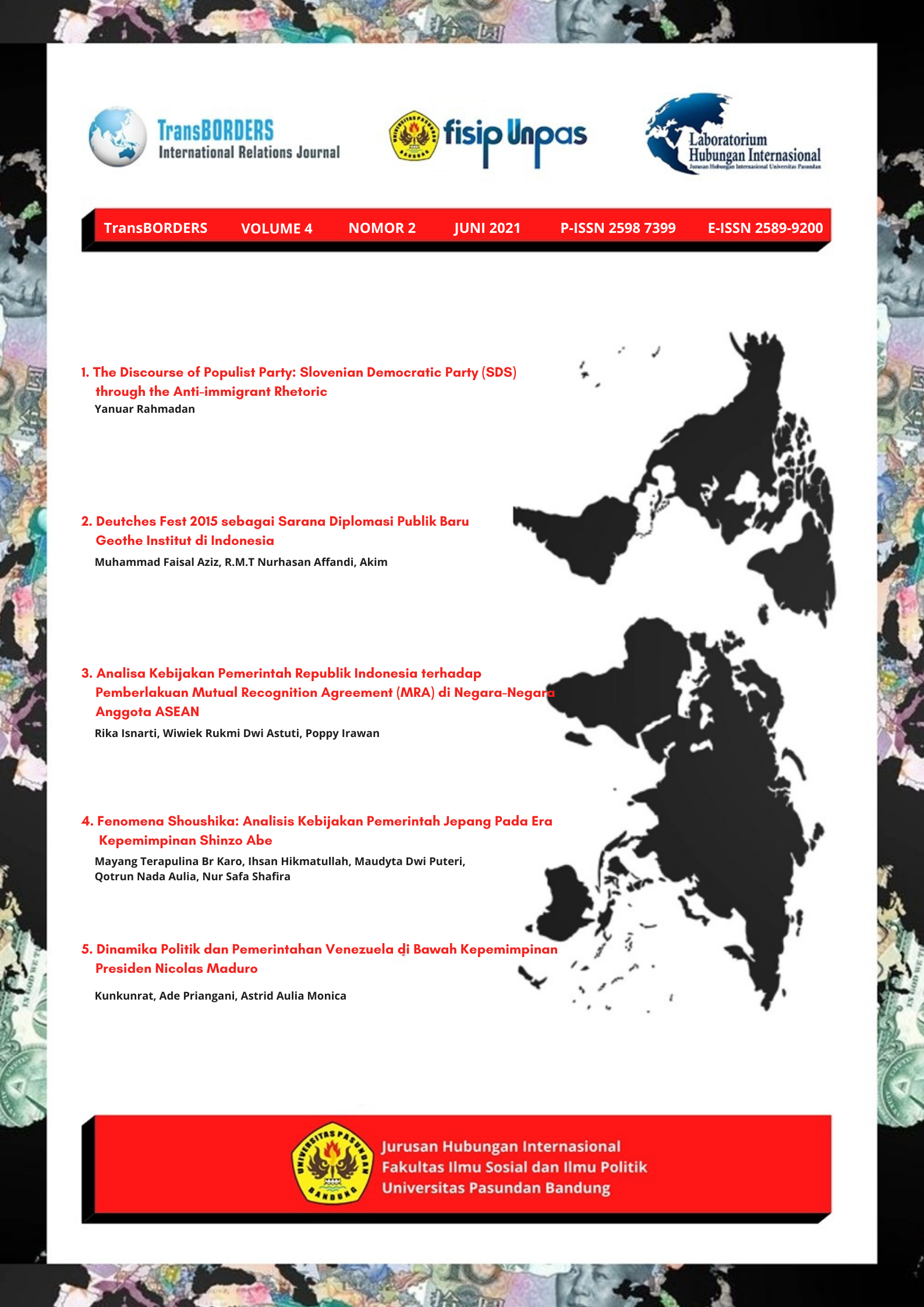Fenomena Shoushika: Analisis Kebijakan Pemerintah Jepang Pada Era Kepemimpinan Shinzo Abe
DOI:
https://doi.org/10.23969/transborders.v4i2.3939Keywords:
Shoushika, Population, Security, Immigrants, Policy, PhenomenonAbstract
The Shoushika phenomenon is a decrease of children population in Japan. This issue is caused by the continuing decline in the number of births and the rapid growth of the elderly population. Declining populations and aging populations hava a substantial impact on the Japanese economy and security due to the lack of productive age population to fill employment sectors in Japan. Shoushika also affects Japanese identity as a country that has been known for its ethnically and culturally homogenous people. As the Japanese government forced to employ foreign workers, the ethnic and cultural heritage of Japanese society could slowly fade if the trend of increasing immigrant workers continue to grow. This phenomenon is also feared to have an impact to the harmony and national security of Japan as a state. The Japanese government, particularly in Shinzo Abe’s administration, then established a policy that was considered to be able to solve Shoushika phenomenon. However, this policy caused a new problem for the Japanese government itself. Therefore, the Japanese government has to reconsider the solution to this matter.
Downloads
Downloads
Published
Issue
Section
License

TransBorders: International Relations Journal is licensed under a Creative Commons Attribution-ShareAlike 4.0 International License
In order to be accepted and published by TransBorders: International Relations Journal, authors submitting the article manuscript should complete all the review stages. By submitting the manuscript, the author(s) agreed to the following terms:
- The copyright of received articles shall be assigned to TransBorders: International Relations Journal as the publisher of the journal. The intended copyright includes the right to publish articles in various forms (including reprints). TransBorders: International Relations Journal retains the publishing rights to the articles it publishes.
- Authors are permitted to disseminate a published article by sharing the link/DOI of the article at TransBorders: International Relations Journal. Authors are allowed to use their articles for any legal purposes deemed necessary without written permission from TransBorders: International Relations Journal, with an acknowledgement of initial publication to this journal.
- Users/public use of this website will be licensed to CC BY-SA (Attribution & ShareAlike).
















